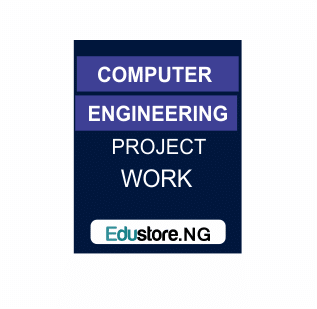TABLE OF CONTENTS
Page
Title page i
Certification ii
Acknowledgement iii
Dedication iv
CHAPTER ONE: Introduction
1.0 Background History of SIWES 1 1.1 Aims and Objectives of SIWES 1
CHAPTER TWO: The Organization
2.0 Location and brief history of the Establishment 2
2.1 Objectives of UBA Plc. 2-3
2.1Organizational Structure of Establishment (organogram) 3
2.2Activities of Electronic Banking Department 4
CHAPTER THREE
3.0 Work Done and Experience Gained At The ATM Services Dept. 5
3.1 The ATM machine 5-6
3.2Hardware Components of the machine 6-10
3.3How The ATM Works 10-12
3.4 Working Principles of the cash media dispenser 12-13
3.5 Installation of an ATM 13-17
3.6 Monitoring Tools 18-19
CHAPTER FOUR: Water Treatment Department
4.1 Aims and Objectives of the Department 20
4.2 Process Involved in the Treatment of Water 20-21
4.3 Filtration Tank 21
CHAPTER FIVE
5.0 Conclusion 22
5.1 Problems Encountered 22
5.2 Recommendation
CHAPTER ONE
INTRODUCTION
1.0 BACKGROUND HISTORY OF STUDENTS INDUSTRIAL WORK EXPERIENCE SCHEME
The Student Industrial Work Experience Scheme (SIWES) was initiated in 1973 by the Industrial Training Fund (ITF). This was in response to the mandate given to the Industrial Training Fund through Decree 47 of 1971charging it with the responsibility of promoting and encouraging acquisition of skills in industry and power with the view of generating a pool of trained indigenous manpower sufficient to meet the needs of the economy.
SIWES has come to be recognized as the major avenue for bridging the gap between the theories acquired by students of tertiary institutions of the various professional disciplines, essential technological and economic development in Nigeria.
Over the years, SIWES has contributed immensely to building the common pool of technical and allied skills auditable to the Nigerian economy which are needed for the nation’s industrial development.
1.1 AIMS AND OBJECTIVES OF SIWES
Basically, the Objectives of the Student Industrial Work Experience Scheme (SIWES) are to;
- Make the transition from school to the labor market easier, and also to enhance students’ contacts for later job placements.
- Expose students to work method and techniques in handling equipment and machinery that may not be available in their institutions.
- Provide an avenue for students in institutions of higher learning to acquire industrial skills and experience during the course of study
- Provide students with the opportunities to apply their educational knowledge in real work situations, thereby bridging the gap between theory and practice.
- Prepare students for industrial work situations that they are likely to meet after their graduation
- Enlist and strengthen employer’s involvement in the entire educational process through SIWES.
- For Reference Only: Materials are for research, citation, and idea generation purposes and not for submission as your original final year project work.
- Avoid Plagiarism: Do not copy or submit this content as your own project. Doing so may result in academic consequences.
- Use as a Framework: This complete project research material should guide the development of your own final year project work.
- Academic Access: This platform is designed to reduce the stress of visiting school libraries by providing easy access to research materials.
- Institutional Support: Tertiary institutions encourage the review of previous academic works such as journals and theses.
- Open Education: The site is maintained through paid subscriptions to continue offering open access educational resources.




